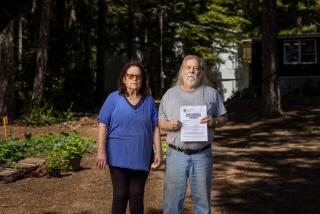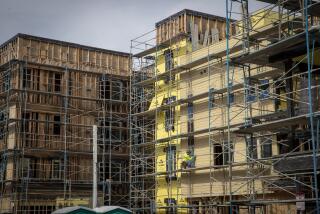HANDYMAN Q & A : Remodeling Hinges on Zoning Code
- Share via
QUESTION: We’re looking at an older home that we intend to remodel. We’ve been told by friends in the area that we may have to modify our plans due to zoning ordinances. What kind of problems might we encounter in this situation?
ANSWER: Basically you have to find out whether your intended improvements will conform to the local zoning ordinances and building codes. Zoning ordinances vary. Sections pertaining to residential neighborhoods often limit the number of unmarried or unrelated persons living in a dwelling.
Often building height is regulated. Adding a second story could push the roof crest above the allowable height limit. Zoning ordinances also specify the distance between the structure and surrounding property lines. An addition may come closer to the side lot boundary or the street than permitted.
Many zoning ordinances regulate the percentage of a lot covered by a structure, so a planned addition may occupy a greater portion of the lot than permitted. Finally, some neighborhoods have historic designations which may complicate or preclude many types of remodeling.
Building codes are concerned with setting design and material standards for construction, including specifications for foundations, framing, electrical wiring and plumbing. The codes state what you can and cannot do when erecting or remodeling a structure.
When adding to an older home, strict application of the building code could require you to bring the entire house up to the present code. This is almost always the case if the cost of the addition totals more than half of the present market value of the house, excluding the lot. You can usually obtain excerpts of the building regulations that apply to your situation from the local building department.
Fire Safety Governs Height of Chimney
Q: The top of my chimney (I have a gas furnace) ends quite a bit below the highest level at the top of my roof. I have heard that this could be dangerous in the event of a moderate wind that could cause a back flow of gases into my home. I would appreciate any comments you might have and suggestions for corrections if needed.
A: The fact that the top of the chimney is below the top of the roof is not necessarily a problem--as long as the chimney is terminated properly. The National Fire Protection Assn. Standard 211 states that chimneys for residential-type appliances must extend at least three feet above the highest point where they pass through the roof of a building, and must be at least two feet higher than any part of the roof within 10 feet measured horizontally.
The measurements must be made from the high side of the roof to the side nearest the top of the chimney. This is sometimes referred to as the 3-foot, 2-foot, 10-foot rule. It applies to both masonry and metal chimneys, whether the chimney is connected to a central heating system, fireplace or stove.
If you need to increase the height of your chimney, you can build it up or perhaps simply add a chimney pot or top vent assembly.
Check Drain Height in Relation to Stream
Q: We have a drain line around the foundation of our house that runs to the edge of a stream. When it rains and the stream gets full, water covers the end of the drainpipe. Could this cause water to back up in the drainpipe or will it continue to drain out?
A: It all depends on the elevation of the drain line relative to the stream when the stream is running full. A difference in elevation will create a pressure differential. As long as there is a greater pressure in the drainpipe, the water will flow out into the stream.
When the edge of the drain line is submerged in the stream, water flowing down the drainpipe will flow into the stream. However, a residual amount of water equal to the level of the stream will remain in the pipe.
If the level of the stream, when the stream is running full, is above the level of the drain line that runs around the foundation, then the water will back up into the drain line to the foundation and cause a water seepage problem.
More to Read
Sign up for Essential California
The most important California stories and recommendations in your inbox every morning.
You may occasionally receive promotional content from the Los Angeles Times.






